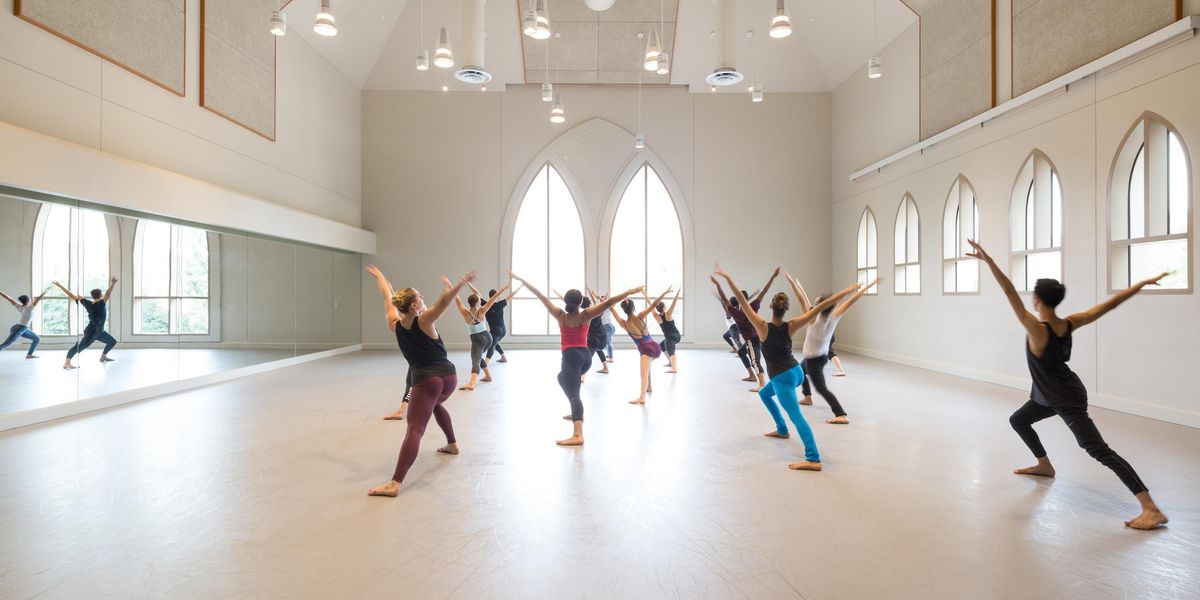Why I Dance: Naomi Fall
A free street performance in Bamako, Mali, with Naomi in center. Photo by Germain Angeli, Courtesy Fall.
Naomi Fall, 25, grew up in France and has performed in New York City at Green Space, the Flea Theater, Dumbo Dance Festival, the Danspace Project, and the Hatch series. She has taught dance at several studios in Brooklyn. After graduating from Sarah Lawrence College in Bronxville, NY, she followed her interest in African dance to Mali.
Both my parents are in the arts; I have always danced and seen dance. I choreographed my first postmodern solo at the age of 2: no music, a couch, and slow quotidian movement. I don’t remember consciously choosing to become a dancer. I just didn’t ever want to stop dancing.
After growing up in France, I went to Sarah Lawrence College in New York. While studying there, I took my first West African dance class, which quickly became a passion. There was something transcendental about it. I loved the feeling of pure joy and dance high it gave me. I then went to Senegal and Ghana to study ethnomusicology. After graduating in 2009, I went to Bamako, Mali, for six months to study their traditional dances. On good days, when the dancing and the drumming are suddenly magically in sync, it’s like deeply rooted flying! The rhythm gets faster and so do your feet, without any effort, you just let yourself go.
While I was there, I taught contemporary dance to a group of street kids living in very precarious situations. After three months, they were transformed. They could trust, laugh with me, and enjoy coming to the sessions. I understood I could make a difference with dance. The artist’s responsibility has always meant a lot to me. We are the voices of our societies; our concerns go far beyond ourselves. We can say what others can’t, in ways others can’t.
I went back to New York in 2011 to dance with Susan Rethorst, which I loved! At the same time, I felt that my story with Mali was not over. By June, I was back in Bamako. One of the most important encounters I had was with the dancer/choreographer Mohamed Coulibaly. We shared a passion for dance and a desire to make it possible for dancers in Mali to dance professionally. There is nowhere to take a daily class at a professional level, there are no theaters (why would there be one when the traditional performances take place outdoors?), no efficient institutions. But we created a company and opened a dance space called GnagamiX. We give free classes for professionals and children and offer free rehearsal space.
GnagamiX’s first tour was to villages in the Mandé region. We presented a trio, Saba’3, to people who didn’t know contemporary dance existed. The shows were very exciting. Three hundred people around us were laughing out loud, screaming. Some were scared, then got caught by the dance; some were even dancing with us from their seats. At a talkback in one of the villages, people came to us talking about love, brotherhood, household issues, friendship, the themes they had seen in the piece and appreciated. They thanked us for bringing something new to their lives. What a boost!
Contemporary dance, which was brought here from Europe and the U.S., doesn’t need to be the “white people’s dance,” as it is often called. And that’s another reason why I want to be here: I believe, I hope, I can contribute to the making of a new dance expression emerging from respecting the old and inventing the new.
The current political situation makes everything harder. There is now a war north of Bamako against jihadists/terrorists who had imposed Islamic law (sharia) in some cities and wanted to take over the country. The economic situation has thus become even more unstable.
I am staying because continuing our work is an act of resistance towards people who believe art is evil. By dancing, we resist their power and build a constructive and creative future.




